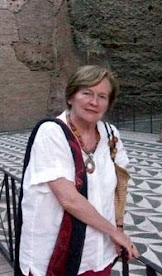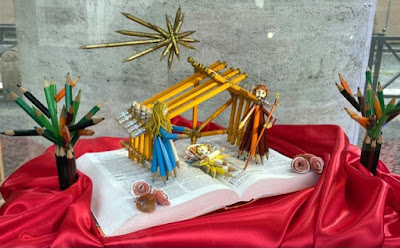 |
| It will be New Year's dinner for 2 in 2020. |
RST welcomes guest writer Mary Jane Cryan, who, originally from the US (she even
went to college at D’Youville in Buffalo), has lived in Italy for more than 50
years. Mary Jane is THE expert on all things Etruria, the fascinating area just
north of Rome that includes the lively city of Viterbo and of Vetralla, where she lives. See her terrific website here: http://www.elegantetruria.com/.
Besides contributing to virtually every important guidebook to Italy and the region,
lecturing on cruise ships, and speaking widely, Mary Jane is a prolific writer
and publisher. Her own books in the past few years have focused on Etruria; her bibliography is on her website.
We have featured her fine work in two prior posts: one on Etruria, here: https://romethesecondtime.blogspot.com/2014/05/etruria-perfect-day-trip-from-rome-with.html
and another on a Borromini monastery (turned luxury hotel) in Rome here: https://romethesecondtime.blogspot.com/2014/09/the-borromini-monastery-in-trastevere.html |
| The table set for a festive crowd in a prior year and hopefully a year to come. |
There was a rush on trains to
get to family homes before the shut down. On 25 and 26 December and New Year’s, January 1st, leaving one's municipality was and is totally prohibited, except for work, health, or other urgent reasons.
Italians are coping with the restrictions
by using their creativity: restaurants offer take-away menus which include
bottles of spumante with orders. Country house accommodations (agriturismi) and
hotels are serving dinner to guests in their own rooms or apartments rather
than in the main dining rooms.
Until this year, New Year’s was celebrated by young people gathering in major piazzas throughout the peninsula, mega concerts were held in Rome, and there was all night dancing in night clubs. I remember fondly one New Year’s evening spent at a concert in Bologna’s magnificent Opera House which ended with a rousing “Radetzky’s March” and bottles of spumante being shared with members of the audience and the orchestra.
| What has been - and what could be - a rousing opera at a full opera house. |
 |
| And a concert in a crowded church. |
Surely traditions like fireworks, wearing
red underwear and throwing old things out for the New Year’s will still happen
throughout Italy, and, even though separated by rules and distances, families will
be united in spirit and by modern technology to welcome in 2021.
Mary Jane Cryan
| Sausages by the fireplace - for 2. |














